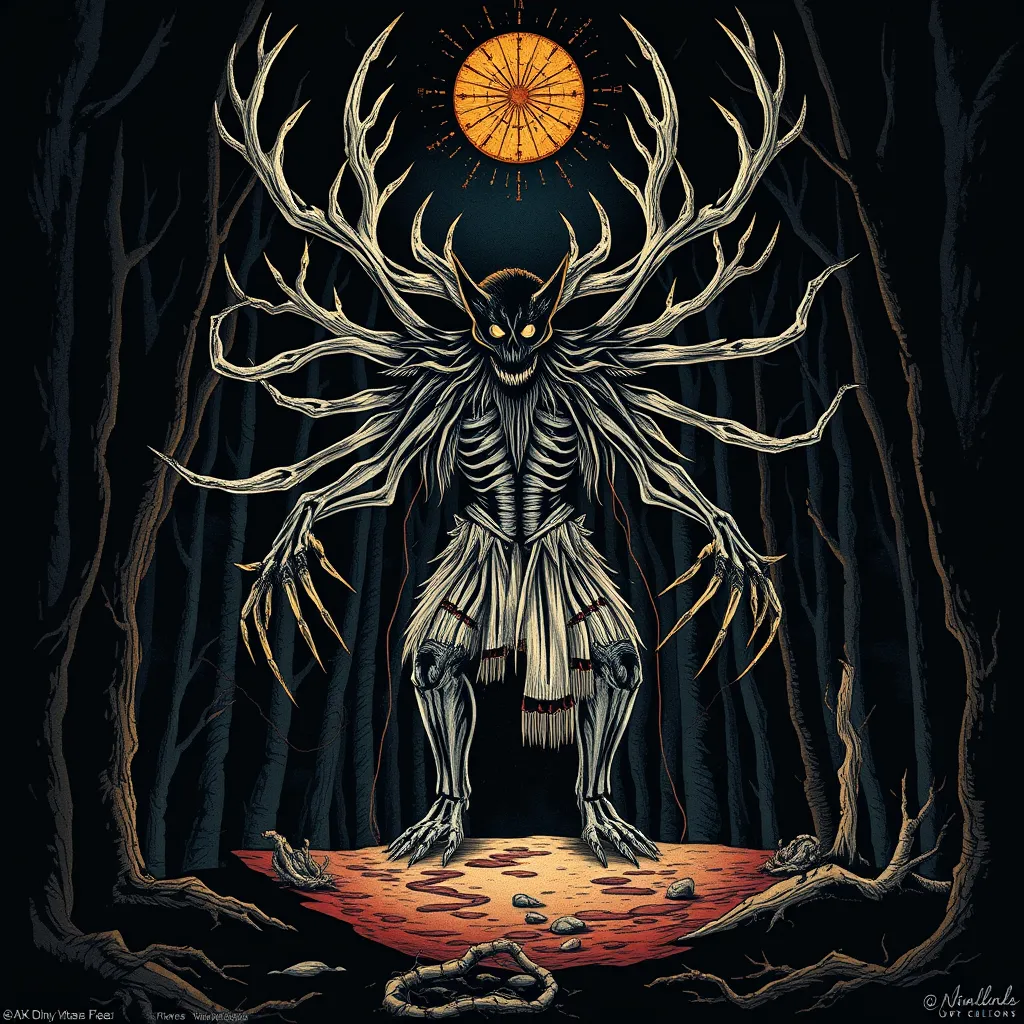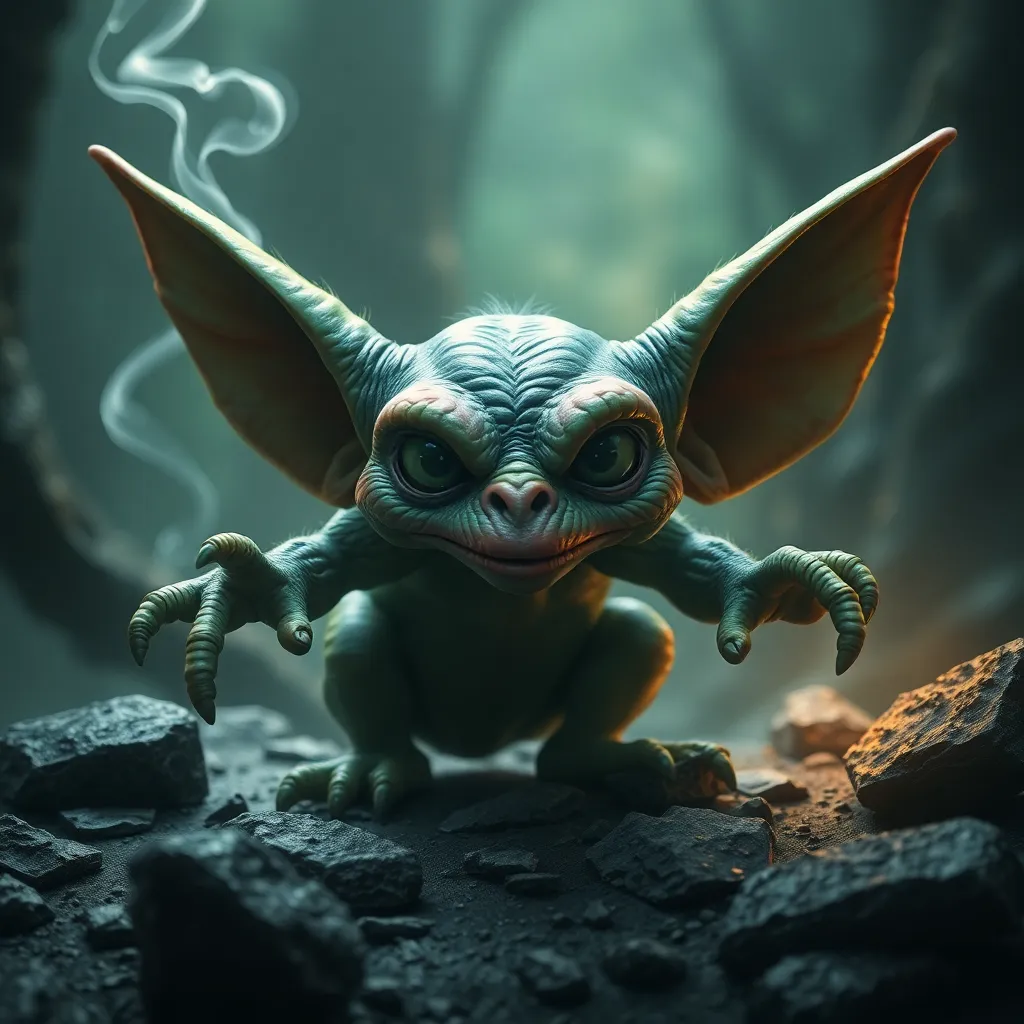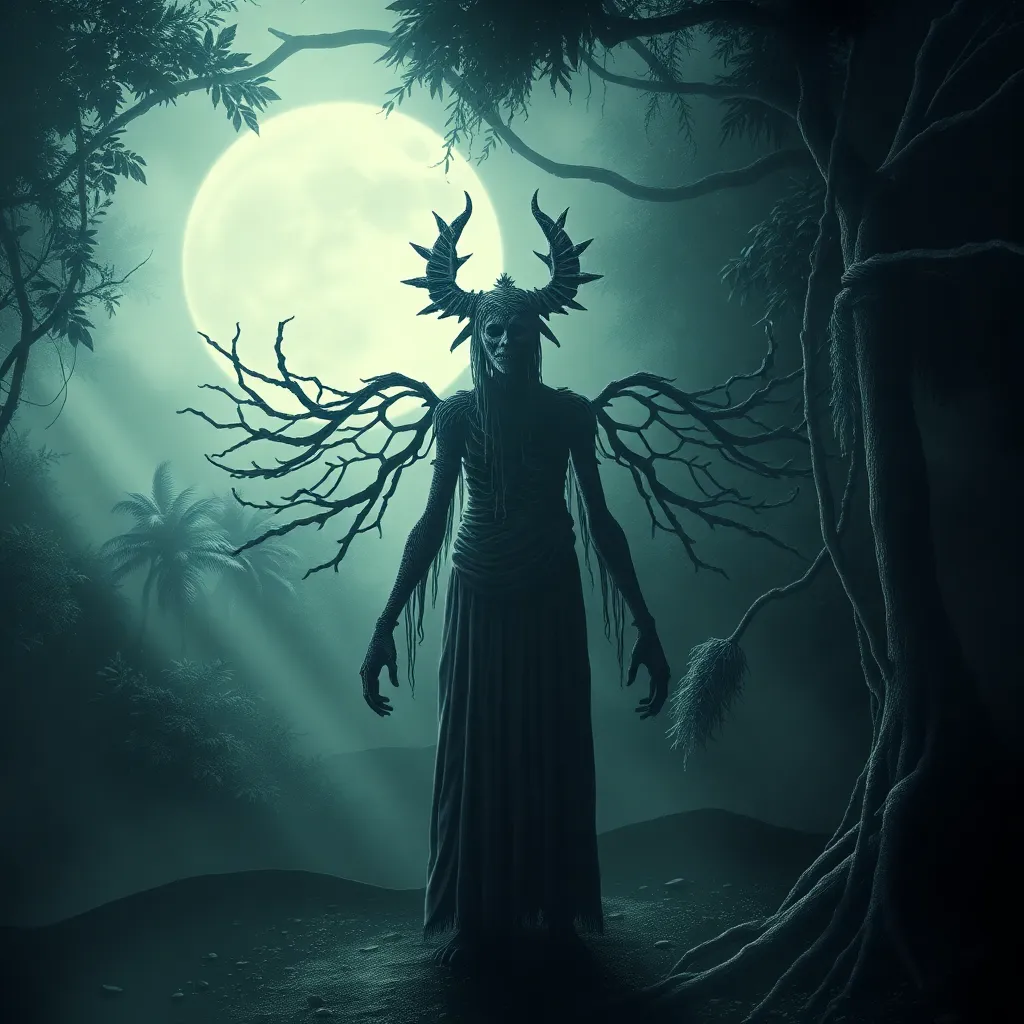The Wendigo’s Origins: Tracing the Roots of a Powerful Myth in Native American Culture
I. Introduction to the Wendigo Myth
The Wendigo legend is one of the most compelling and haunting tales within Native American folklore. It tells the story of a malevolent spirit associated with winter, starvation, and insatiable greed. This creature, often depicted as a gaunt, skeletal figure with an insatiable hunger for human flesh, reflects deep cultural fears and societal values.
In Native American culture, particularly among the Algonquian-speaking tribes, the Wendigo serves as a significant symbol of moral and ethical boundaries. The legend is not merely a tale of horror; it embodies teachings about the dangers of greed, the importance of community, and the respect for nature.
This article seeks to explore the origins of the Wendigo myth, its cultural impact on Native American identity, and its evolution over time, as well as its place in modern popular culture.
II. Historical Context of the Wendigo Legend
The Wendigo’s roots can be traced back to early accounts in Native American folklore. Historical records suggest that the legend has been passed down through generations, often evolving with the changes in the social and environmental landscapes.
- Early accounts: First documented references to the Wendigo can be found in the 19th century, but oral traditions may date back much further.
- Cultural factors: The harsh winters and food scarcity faced by Indigenous peoples played a significant role in shaping the myth, emphasizing survival and the consequences of desperation.
- Geography: The Wendigo is primarily prevalent in regions of northern Canada and the United States, particularly among the Algonquin, Ojibwe, and Cree tribes.
III. The Wendigo in Algonquian Language and Meaning
The term “Wendigo” itself has deep roots in the Algonquian language. Linguists have traced its etymology to words that connote “to eat” or “to consume,” highlighting its association with cannibalism and hunger.
- Etymology: The word “Wendigo” is believed to derive from the Algonquian word “wiindigoo,” which translates roughly to “the thing that is eaten.”
- Tribal variations: Different tribes have their interpretations of the Wendigo, with variations in its characteristics, behavior, and moral implications.
- Symbolism: In Algonquian culture, the Wendigo symbolizes the dangers of unchecked ambition and greed, acting as a cautionary figure against moral transgressions.
IV. Psychological and Social Dimensions of the Wendigo Myth
The Wendigo myth transcends mere horror; it embodies psychological and social dimensions that reflect the complexities of human nature and societal values.
- Greed and excess: The Wendigo is often seen as a representation of greed, embodying the consequences of an insatiable desire for more, whether it be food, wealth, or power.
- Moral warnings: The myth serves as a warning against moral transgressions, reminding individuals of the importance of community and the dangers of isolating oneself in pursuit of selfish desires.
- Communal stress: In times of scarcity, the Wendigo narrative reflects communal stress and the survival tactics necessary to endure harsh conditions.
V. The Wendigo in Modern Popular Culture
In recent decades, the Wendigo has made its way into modern popular culture, appearing in various forms of literature, film, and gaming.
- Literature: The Wendigo has been featured in works by authors such as Algernon Blackwood and more recently in horror novels exploring its mythos.
- Film and TV: The creature has appeared in numerous horror films and television series, often portrayed as a monstrous villain that embodies chaos and terror.
- Gaming: Video games, such as Until Dawn, have incorporated the Wendigo, emphasizing its lore and terrifying nature.
While these adaptations have broadened the reach of the Wendigo myth, they also raise critiques regarding cultural appropriation and misrepresentation. Many argue that these portrayals often strip the legend of its cultural significance and reduce it to a mere horror trope.
VI. The Wendigo’s Transformation Over Time
Throughout history, the Wendigo legend has undergone significant transformations, influenced by various social and political changes.
- Historical periods: The legend has evolved from traditional oral storytelling to adaptations in contemporary media, reflecting the changing perceptions of Native American culture.
- Colonization effects: The impact of colonization has reshaped the Wendigo narrative, as Indigenous peoples faced cultural suppression and adaptation to new societal norms.
- Contemporary relevance: Today, the Wendigo remains relevant, serving as a reminder of the importance of cultural heritage and the lessons embedded in folklore.
VII. Comparative Analysis with Other Mythical Creatures
The Wendigo shares similarities with various mythical creatures across different cultures, often embodying universal themes of fear and survival.
- Cannibalistic myths: Similar to other legends, such as the European werewolf, the Wendigo represents the fear of losing one’s humanity to primal instincts.
- Global folklore: The Wendigo can be compared to creatures like the ghoul in Middle Eastern folklore, which also involves themes of cannibalism and the desecration of the dead.
- Universal themes: Both the Wendigo and other mythical beings reflect humanity’s struggle with fear, survival, and the moral dilemmas faced in dire circumstances.
VIII. Conclusion: The Enduring Legacy of the Wendigo
The Wendigo stands as a powerful symbol within Native American culture, encapsulating deep moral lessons and cultural values. Its significance transcends mere folklore, serving as a reflection of the human condition and the importance of community.
As we explore the depths of the Wendigo myth, it becomes clear that preserving indigenous myths is crucial for understanding the complexities of identity, culture, and history. The enduring legacy of the Wendigo serves as a reminder of the rich tapestry of Native American folklore and its relevance in contemporary society.
Future explorations of the Wendigo and similar myths can enrich our understanding of cultural narratives, emphasizing the importance of respecting and honoring the stories that shape our worldviews.



